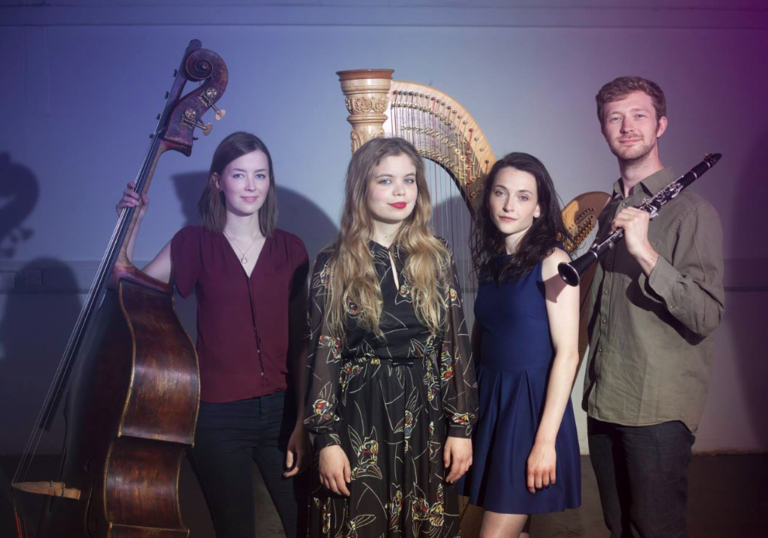
Programme and performers
Oliver Leith Uh huh, Yeah
Stevie Wishart Eurostar – a journey between cities in sound
Mira Calix DMe
Jethro Cooke & The Hermes Experiment Metropolis
Shiva Feshareki TRANSFIGURE
The Hermes Experiment
Anne Denholm harp
Marianne Schofield double bass
Oliver Pashley clarinet
Héloïse Werner soprano
Shiva Feshareki turntables and immersive electronics
Artist biographies
The Hermes Experiment is one of the UK’s most unusual ensembles: a contemporary quartet made up of harp, clarinet, voice and double bass. Capitalising on its deliberately idiosyncratic combination of instruments, the ensemble regularly commissions new works, as well as creating its own innovative arrangements and venturing into live free improvisation.
The ensemble won the Royal Philharmonic Society’s Young Artist Award in 2021. To date it has commissioned over 60 composers at various stages of their careers. Its debut album Here We Are was released in July 2020 on Delphian Records to critical acclaim. A second album, Song, followed in October 2021 and was again warmly received.
The Hermes Experiment has additionally won the Royal Over-Seas League Mixed Ensemble Competition (2019), Tunnell Trust Awards (2017), Nonclassical’s Battle of the Bands (2014), Making Music Selected Artists (2019–20) and Park Lane Group Young Artists (2015–16).
Recent highlights include performances at the Wigmore Hall, Aldeburgh Festival, Southbank Centre, Leeds Lieder and Oxford Lieder. The Hermes Experiment was one of the showcase artists at the Classical NEXT Conference in 2019. In January 2019 the group celebrated its fifth birthday with a concert supported by Arts Council England and RVW Trust, an event that was also recorded for BBC Radio 3.
The ensemble is also dedicated to the importance of contemporary music in education and community contexts. In 2021 it ran a Virtual Composition Project, supported by Arts Council England. It was ensemble-in-residence for the Young Music Makers of Dyfed 2018–19, and, as part of its fifth-birthday project, ran composition workshops in state schools in and around London.
